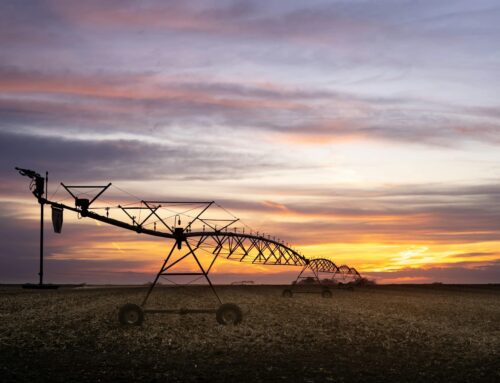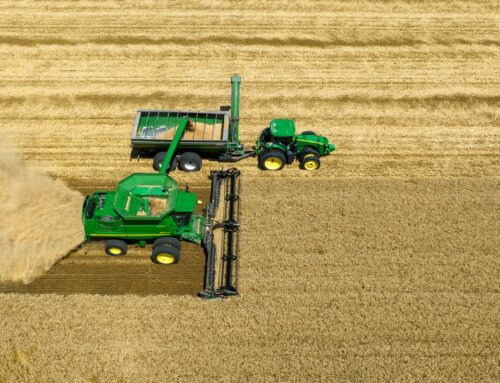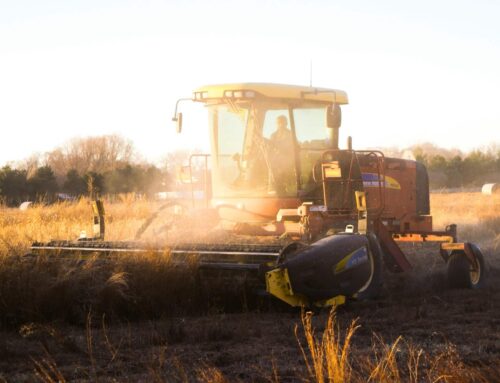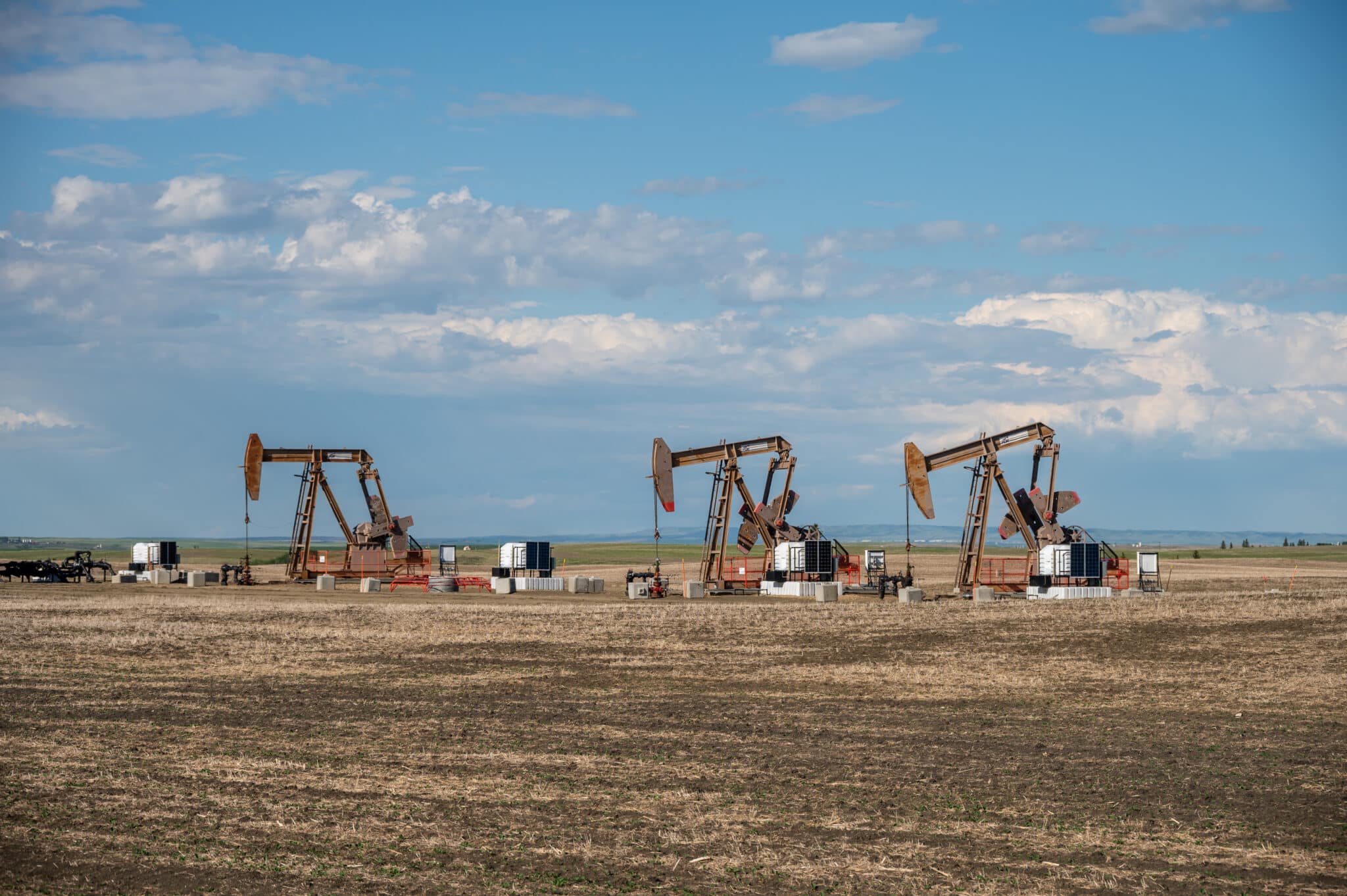View/Download this article in PDF format.
August 2015
The current farm safety net is a complex web of overlapping and expensive subsidies that rewards special interests and large agribusinesses at the expense of taxpayers. The most recent farm bill, The Agricultural Act of 2014, replaced the outdated and widely discredited direct payment program with resurrected government-set minimum prices, expanded crop insurance subsidies, and new shallow loss agribusiness entitlement programs that shift unnecessary risks onto taxpayers. Despite the fact that the agriculture sector has reaped record profits over the past several years, the 2014 farm bill still provides lucrative commodity payments and crop insurance subsidies with no payment caps. While the bill slightly improved the accountability of crop insurance subsidies, it also created several new special carve-outs for everything from cotton to catfish, failed to close loopholes allowing city dwellers and millionaires to benefit from farm programs, and squandered an opportunity to increase the public transparency of farm subsidies.
| “[Landowners and producers who exploit farm subsidy loopholes] mastered Monopoly at a young age.”
– Rural resident of Cedar County, Nebraska, July 2014 |
To create a more fiscally responsible farm safety net, policymakers should go back to the drawing board and craft a more cost-effective, accountable, transparent, and responsive system reflective of today’s realities – not yesterday’s wishes. Just because the farm lobby has muscled its way around Washington for decades doesn’t mean that the tides can’t turn. They already did. In 2013, the House failed to pass a status quo farm bill larded up with perverse incentives, increased risk taking at taxpayer expense, and a little something for everyone. The days of piling on special interest goodies must be over; we simply can’t afford it. To become law, the next farm safety net will need to only step in when markets fail to protect public interests, utilize more private sector risk management tools, and be specifically targeted to those in need.
Background – Current Agricultural Policy Structure
The current agricultural subsidy system is a maze of market distorting policies that reward a handful of large farm businesses growing just a few highly subsidized crops – primarily corn, soybeans, wheat, rice, and cotton. The system results in costly inefficiencies that detract from program goals and produce numerous unintended consequences. The federal government subsidizes a disproportionate amount of the risks agribusinesses face to the detriment of taxpayers, consumers, and agriculture as a sector making it less competitive, less resilient, and less accountable for its impacts. These programs and policies are made up of direct federal expenditures, programs that shift business risk from producers to taxpayers,and mandates that create or influence market conditions. Examples include shallow loss entitlement programs, government-set minimum prices, industry specific programs, highly subsidized crop insurance, disaster programs, trade policies, biofuels mandates, subsidized loans, and many more. Decades of federal subsidies have simply been piled on top of one another, resulting in an ineffective and inefficient farm safety net.
| “All farm payments should be wiped out and not replaced. We receive so little money [compared to large producers] that it isn’t worth it.”
– Corn/soybean farmer from northeast Nebraska, July 2014 |
Agriculture Subsidy Accountability
A more adequate, effective, and efficient agriculture safety net can be created by crafting a new system that meets the following criteria: cost-effective, accountable, transparent, and responsive. In the long-term, lawmakers should start from a blank slate, but for the purposes of the next farm bill, below are common sense recommendations that would set U.S. agriculture policy a solid path forward. The following reforms – just to crop insurance and other farm subsidy programs – could alone save taxpayers at least $100 billion over the next decade.
(1) Cost-effective
- Allow agribusinesses to continue to manage their risks or assume more risk: Government payments should only be provided when agricultural risks can’t otherwise be managed by the private sector and/or when a market failure exists. Producers that utilize their own unsubsidized risk management strategies should continue to manage their own risks without government intrusions or subsidies that distort the marketplace. Producers growing crops that aren’t financially profitable without government subsidies should transition to other crops.[1] For those agribusinesses that may need assistance during years of severe natural disasters such as widespread drought, government subsidies – particularly crop insurance subsidies – should be targeted only at yield losses instead of guaranteeing high levels of business income year after year.[2] The following crop insurance program reforms could save taxpayers more than $50 billion over the next ten years: (1) capping currently unlimited crop insurance premium subsidies at $40,000 per producer; (2) eliminating subsidies for the most profitable agribusinesses (producers would still be able to purchase unsubsidized policies); (3) eliminating subsidies to profitable crop insurance companies that sell subsidized policies; and (4) eliminating harvest price option subsidies which subsidize agribusinesses’ private sector risk management strategies such as hedging and forward contracting.[3]
- Allow private sector to compete on level playing field: The federal role in the agricultural safety net is to help protect against risks that the private sector is incapable of effectively managing, not crowd out the private sector out of convenience or the benefit of parochial interests. If the private sector was allowed to compete on a level playing field, additional unsubsidized private risk management options could be better utilized or developed, such as hedging, private crop insurance, off-farm income, diversification, better liquidity, forward contracting, and vertical integration.
- Eliminate duplicative and wasteful subsidies: With numerous agricultural subsidy programs striving to achieve similar goals and cover the same risks, agribusinesses ultimately receive duplicative payments that waste taxpayer dollars. Outdated subsidies such as government-set minimum prices must be eliminated for good, and those covering the same losses such as shallow loss entitlement programs and crop insurance must be better targeted to eliminate overlap and only kick in during poor growing years. Furthermore, underlying problems such as taxpayer subsidies and mandates for corn ethanol, which contribute to higher input prices in the livestock and poultry industries, should be eliminated instead of creating new taxpayer subsidized margin insurance programs for dairy and other industries.
- Cut outdated price supports and loans and reject new income guarantee subsidies: Washington should not guarantee any industry’s profits – including agriculture. Because new shallow loss income entitlement subsidies lock in record farm income and increase the government’s role in everyday business decisions of agricultural producers, at great cost and with little public benefit, they should be eliminated.
- Only pay for additional conservation practices: Instead of paying agribusinesses to implement conservation practices that they would employ on their own, either as routine business practice or in response to reasonable health and welfare regulations, millions of taxpayer dollars could be saved by only paying for additional practices that produce measurable public benefits and reduce downstream and future costs of the agriculture industry’s impacts. To achieve full cost-effectiveness, payments must be targeted to areas most in need and to practices with the greatest measurable impact.
(2) Accountable
- Target subsidies to the needy: Federal taxpayers cannot afford to dispense unlimited agricultural subsidies regardless of the state of the farm economy, agribusiness profits, whether subsidy recipients even have anything to do with farming, or whether or not crop losses actually occurred. Federal support should be targeted only to the truly needy to recover from unforeseen catastrophic natural disasters from which reasonable prudent practices will not protect. Additionally, reasonable limits and stricter definitions on which agribusinesses qualify for subsidies must be utilized to ensure that federal programs do not work at cross-purposes.[4]
“A $40,000 annual limit on crop insurance subsidies makes sense. It would only affect a few of the largest producers around here.” – Crop insurance agent from northeast Nebraska, July 2014
- Root out waste, fraud, and abuse: Greater effort must be placed toward rooting out waste, fraud, and abuse in all government programs. Similarly, subsidies that end up in the hands of those who don’t need them or don’t qualify should be eliminated immediately.
- Limit market intrusions: Subsidy programs should strive for limiting unintended consequences, eliminating excessive risk taking at taxpayer expense, and having minimal interference with agricultural markets and land prices. Otherwise, agribusinesses are incentivized to plant crops on marginal lands where success is unlikely and or in places where crops wouldn’t be cultivated in the absence of federal subsidies. Subsidies should also be limited by acreage so taxpayers aren’t subsidizing production on new high-risk land such as on steep slopes or on wetlands. More specifically, federal crop insurance programs should be actuarially sound and require producers farming high-risk land to pay a premium for coverage where crop losses are more frequent; currently, producers farming high-risk and low-risk land are treated equitably since crop insurance coverage is denied to no one regardless of their farming practices, risk profile, or need for government support. USDA even allows high- and low-risk parcels of land to be separated from one another so even if an agribusiness had record income from most farmland, but a few high-risk acres suffered a loss, taxpayers would still foot the bill. And due to the program’s perverse incentives, if the planting season begins later than normal, producers can currently take “prevented planting” payments instead of planting a poorer yielding crop that will potentially reduce their historic production average, which lowers their overall guarantee in future years. Future policies should limit perverse incentives and encourage planting for the free market instead of Washington.
- Meet minimum accountability standards: Agribusinesses must use best management conservation practices in exchange for any taxpayer support. Rotating crops, conserving wetlands, using conservation tillage practices, and other time-tested industry-standard means should be employed to reduce downstream costs of agricultural pollution, conserve land for future generations, and reduce taxpayer liabilities. These provisions should be implemented properly and consistently throughout the country.
- Achieve measurable results: Taxpayers have a right to know which agriculture programs receiving federal dollars are achieving measurable results. Agricultural programs must have improved performance measures and metrics in order that spending can be prioritized and targeted toward the most effective projects with the best return on investment.
- Eliminate corporate welfare subsidies: Corporate subsidies that place taxpayers in the position of covering the expected and inevitable costs of business decisions should be eliminated (like subsidizing overseas market promotions for profitable companies, paying for swine odor reduction research, installing corn ethanol blender pumps, or mitigating pollution caused by large animal feeding operations). Businesses must be accountable for the inevitable ramifications of their business decisions.
(3) Transparent
- Make agricultural subsidy programs transparent: At one point or another, all taxpayer subsidies have been shielded from the public eye. It’s time all subsidies – including highly subsidized crop insurance premiums – became transparent and available in an easily accessible and understandable format. Additionally, public comment and increased transparency should be required on all changes or additions to federal subsidy programs such as crop insurance so future expenditures can be scrutinized in the light of day instead of backroom-brokered deals. If agribusinesses object to the public’s right-to-know, they can turn down federal subsidies and instead utilize unsubsidized risk management options.
(4) Responsive
- Make agriculture responsive to current needs by repealing permanent farm bill law: Agriculture policy should not be based on outdated policies developed during the Great Depression that no longer meets modern needs. Keeping permanent law in place serves one purpose: forcing lawmakers to choose bad policies over disastrous ones. This cynicism must end if we ever hope to achieve a more effective and efficient farm safety net that limits taxpayer expenditures and excessive risk taking.
- Separately consider farm and nutrition policies: To achieve unprecedented farm policy reforms, lawmakers should rethink the current vehicle for agriculture and food policy, the farm bill. In recent farm bills (except for separate consideration in the 2013 House bill which was ultimately dropped in the final 2014 farm bill), nutrition and farm subsidy supporters protect baseline spending by uniting under one piece of legislation. Tying nutrition policy to agricultural policy provides a disservice because the needs of producers don’t necessarily intersect with the needs of nutrition program participants. For too many years, the special interest wishes of farm subsidy proponents have dictated the outcome of agricultural and nutrition policies rather than the needs of average farmers and consumers. Separating these two major components would allow each topic to be debated on its own merit.
- Eliminate special interest subsidies and parochial programs: A major priority should be providing an adequate and appropriate agricultural safety net that yields public benefits rather than special interest subsidies and parochial programs, such as revenue or profit margin guarantees for everything from swine to sugarcane. Taxpayers cannot afford to pick winners and losers or insulate individual agricultural businesses from the physical and market conditions impacting their operations.
Longer-Term Recommendations
Longer-term policy reform recommendations include directing government support toward broader objectives that benefit the public good, invest in long-term priorities, and are not beholden to special interests. Other countries have already implemented these reforms, albeit in different ways. New Zealand eliminated nearly all government subsidies, resulting in a more efficient and self-sustaining agricultural industry. The European Union moved away from traditional price supports to single payments that are based on agricultural practices that benefiting the public at large. Countries like Canada have implemented government-sponsored farmer savings accounts encouraging producers to save profits earned during favorable growing years to keep agribusinesses afloat during years with lower incomes. While imperfect, moving U.S. farm policy in this direction would help alleviate agribusinesses’ incentive to spend annual income each calendar year to lower tax liability. This idea was proposed by Rep. Kind (D-WI) and now-Senator Flake (R-AZ) during the 2008 farm bill debate.[5]
| “We would support a farmer savings account that doesn’t incentivize spending all of our profits before the end of the year for tax purposes. This would have really helped us out when we started farming since we worked too hard and then paid all our profits to taxes.”
– Grain/soybean and Community Supported Agriculture (CSA) farmers from northeast Nebraska, July 2014 |
Experts have also proposed several alternatives to the current federal crop insurance program which cost taxpayers a record $14 billion in Fiscal Year 2012. Former USDA Chief Economist Joe Glauber previously suggested dispensing limited crop insurance premium vouchers only to those in need.[6] This would eliminate many of the perverse incentives inherent in the current program since subsidies are tied to current production levels and hence, are effectively unlimited. Iowa State University economist Dr. Bruce Babcock suggests farmers cover a greater portion of their crop insurance premiums, including catastrophic coverage which pays out when losses exceed 50 percent of an expected level.[7] If crop insurance companies were allowed to compete with one another on policy development (which is currently prohibited), lower crop insurance operating costs would result. These are just a few common sense recommendations that could help create a more accountable and cost effective farm safety net.
Conclusion
The time has come that U.S. agricultural policies become more cost-effective, transparent, accountable to taxpayers, and reflective of today’s modern production practices and our $18 trillion national debt. Taxpayers and America’s farmers alike deserve an adequate, effective, and efficient agricultural safety net that limits unintended consequences, eliminates long-term liabilities, and allows private risk management options to compete on a level playing field. Producers should strive to operate under free markets that aren’t littered with unnecessary distortions and arbitrary, nontransparent special interest carve-outs that pick winners and losers. Making federal agricultural policies more accountable to taxpayers and the public will not only save tens of billions of federal dollars, but will also reduce barriers for the next generation of farmers and promote a more resilient American agriculture.
For more information, visit www.taxpayer.net, or contact Joshua Sewell, josh at taxpayer.net.














Get Social